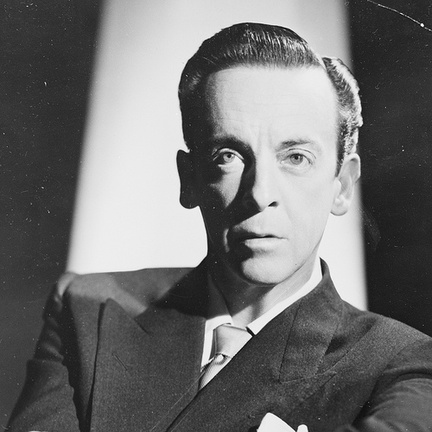When Sir Robert Helpmann CBE died in Sydney on 28 September 1986 the curtain fell on a career so long, diverse and extraordinary that obituary writers hardly knew where to start. Into his 77 years he had packed more activity, met more challenges and excelled in more fields than any of his contemporaries, in Australia or overseas.
What was he? A dancer? A choreographer? A director of ballets, plays and operas? A stage, film and television actor? Even a singer? He was all these and much, much more: a theatrical chameleon, capable of adroitly adapting his prodigious knowledge, talent and enthusiasm to everything he tackled. Robert Helpmann was unique.
Today most people identify him with ballet and it was in dance that he first made his mark. Young Bobby’s professional career began in 1927 when he was principal dancer in Frasquita at His Majesty’s in Sydney. In 1933, Helpmann left Australia for London where, soon after, he was accepted into the Sadler’s Wells Ballet School and before long became a member of the company. He was with the Wells from 1934 to 1950, often in partnership with Margot Fonteyn.
Helpmann’s innate genius for choreography culminated in the extraordinarily influential 1948 film The Red Shoes. He was also involved in the spectacular screen version of The Tales of Hoffmann in 1953. Later, he was featured in a diverse array of film.
He turned his talents increasingly to drama, appearing with Vivien Leigh in the Old Vic’s A Midsummer Night’s Dream in 1937 and Hamlet in 1944. In 1947, with Michael Benthall, Helpmann became artistic director at the Duchess Theatre. In 1948 he joined the Shakespeare Memorial Theatre, playing at Stratford-on-Avon as King John, Hamlet and Shylock.
In 1955 he led the Old Vic’s tour of Australia, appearing on stage with Katherine Hepburn. The press welcomed Helpmann’s homecoming with a mixture of admiration and suspicion: admiration for his obvious achievements, and suspicion of his extrovert flamboyance.
In the 1950s and 1960s Helpmann worked extensively as a director. His diverse credits include ballet, pantomime drama and many of Shakespeare’s plays.
He returned to the Royal Ballet (formerly Sadler’s Wells) for its first Australian tour in 1956, dancing in Coppélia, Façade, The Rake’s Progress and his own ballet, Hamlet. For The Australian Ballet he created The Display, Yugen and Sun Music. From 1965 until 1976 Helpmann was artistic director of The Australian Ballet, working in association with Dame Peggy van Praagh for the first nine years of his tenure. He directed the 1970 Adelaide Festival of Arts.
In 1966 he was named Australian of the Year. A knighthood followed in 1968.
In 1975 Helpmann acquired the rights to transform The Merry Widow into a ballet. One of the Australian Ballet’s greatest successes, The Merry Widow remains a favourite in the repertoire. Throughout the 1970s, he continued to make guest appearances with the world’s major dance companies and he appeared in film, on stage and he continued directing.
In 1981 Helpmann worked with the Australian Opera, directing Alcina by Handel. In 1983 he celebrated his sixtieth year in theatre with involvement in productions in the three main auditoriums of the Sydney Opera House. In 1985 Helpmann was the Red King in Checkmate for The Australian Ballet, reviving a role created for him nearly half a century before. It was his last stage appearance.
Helpmann died as he had always lived: as a creature of the theatre:
‘Theatre remains the only thing I understand,’ he said. ‘It is in the community of the theatre that I have my being. In spite of jealousies and fears, emotional conflicts and human tensions; in spite of the penalty of success and the dread of failure; in spite of tears and feverish gaiety – this is the only life I know. It is the life I love.’
adapted from Frank Van Straten, OAM
© Frank Van Straten, 1999
Read Sir Robert Helpmann CBE's Hall of Fame biography.

